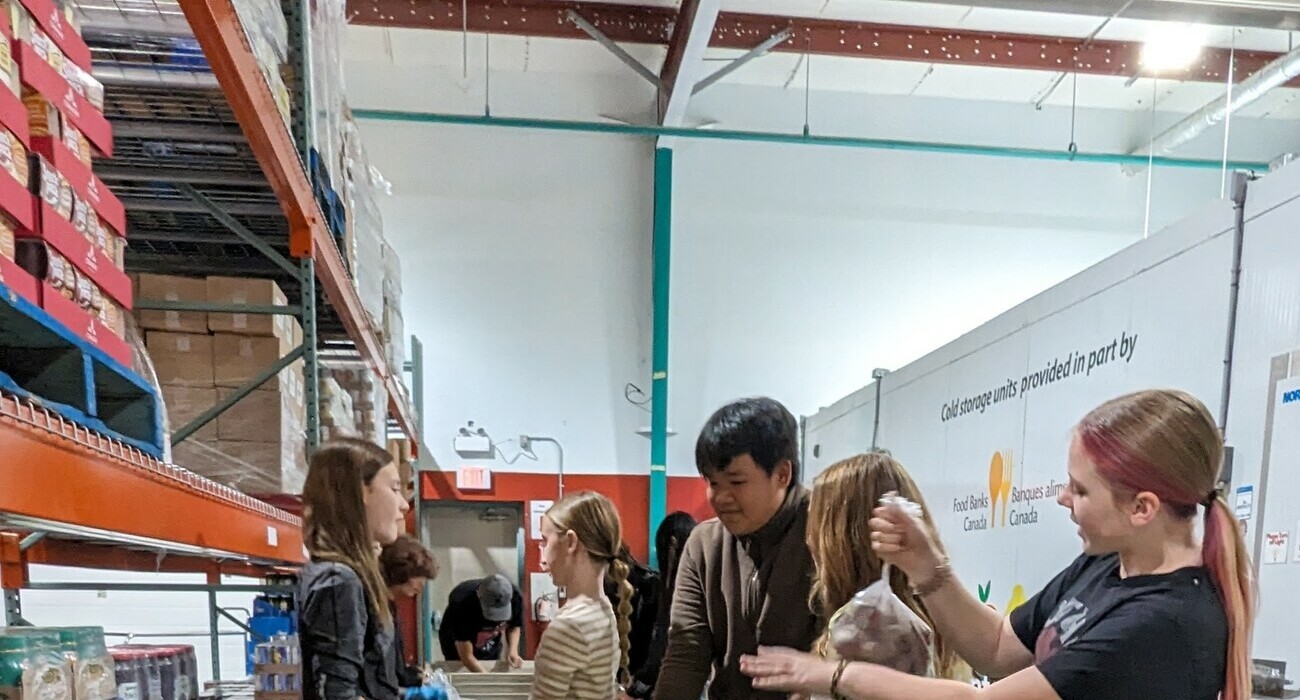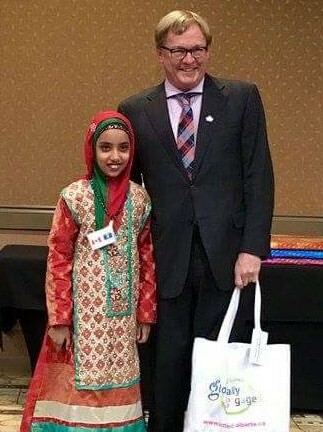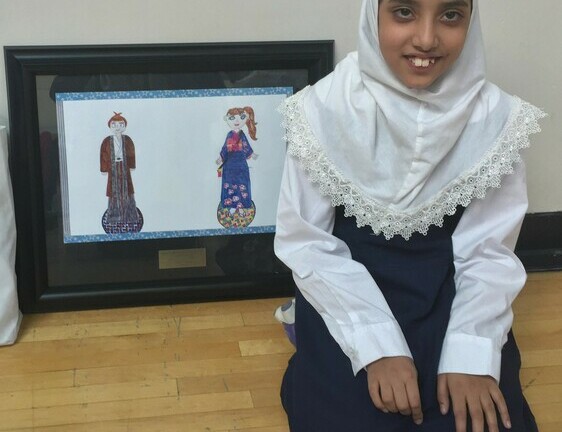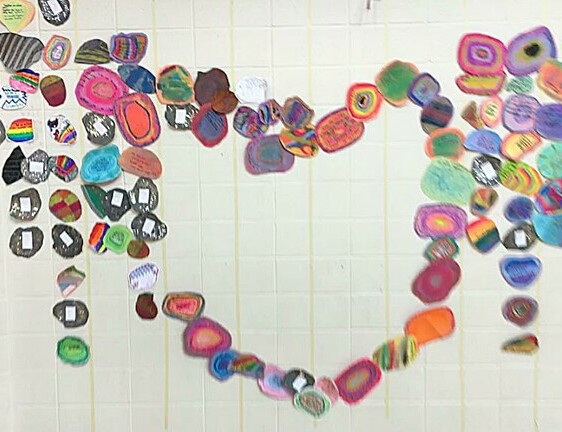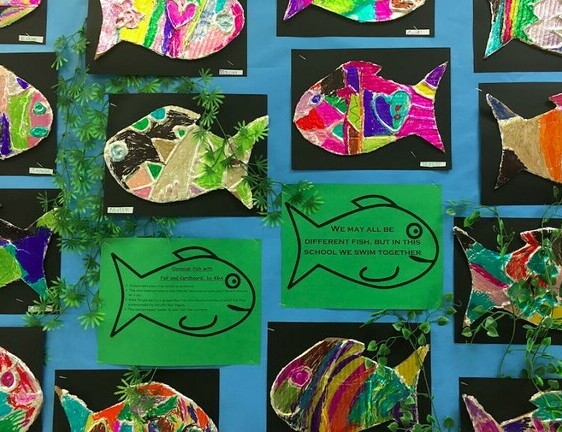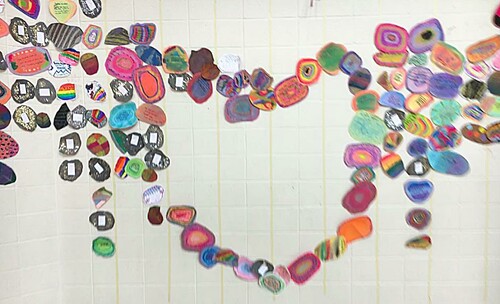
When Grade 3 student Amina Farooq’s art was selected for display in the Alberta Legislature during Education Week in May, she became just one of many artists at her school using their work to celebrate cultural diversity.
In fact, it was something of a theme at Omar Bin Al-Khattab campus of Calgary Islamic School this year.
Farooq’s work showed a man and woman in traditional Japanese dress, recognizing the 35th anniversary of Alberta’s sister relationship with Hokkaido, Japan. Her work received an honourable mention in the provincial art contest.
Art at the kindergarten through Grade 9 school was intertwined this year in student leadership activities, explorations of science and expressions of culture, says junior high teacher Anisa Khan.
Khan was involved in professional development through SHIFT Lab, a year-long program for teachers at Telus Spark Science Centre. The program encourages teachers to use design thinking and inquiry to enrich student learning.
The experience in SHIFT Lab led Khan to create a Design and Innovation Club, which gave a dozen students an opportunity to learn computer coding, video creation using iPads, and understanding circuitry. While it sounds like science and technology education, the club’s efforts were also artistic. Students learned circuitry to light up stickers, then incorporated those lights into Ramadan or Eid cards, celebrating Muslim holidays, or to illuminate origami, the Japanese art of folded paper.
“I love art and I seize any opportunity to get art squeezed in,” Khan says. ““My classroom became a lab, with materials students could explore.”
Student art may involve intricate geometric designs or calligraphy from Muslim tradition, she says.
The art is also intertwined with the school’s faith program. Each month, the school celebrates a virtue, such as perseverance, so students might performs skits, draw representations of the theme or write poetry expressing their interpretations. One student created an intricate geometric pattern, explaining perseverance was required to create such a detailed work. In another example, Khan recalls a student using a computer to create a presentation of kinetic typography, so both the words and their animation on screen conveyed meaning.
Her work in SHIFT Lab was a perfect mesh with Palliser’s Grade 7-12 student leadership conference in November. Discover U invited students to work in school groups to identify a need in their school or community, then create an action plan to address it. The conference encouraged students’ design thinking.
“It’s a process. You’re trying something out,” Khan says. “The student is trying something out, experimenting, revising, tweaking and finally something is created.”
It requires the teacher to release some control to the student to experiment, a leap of faith that the process will produce meaningful learning.
Students at OBK decided their leadership this year would embrace “Unity through Diversity.” It took shape in an art project that invited contributions from every student in every grade.
Teachers asked students to colour stone-shaped objects with messages or drawings that reflected their own take on Unity Through Diversity. Then the individual pieces were arranged into a colourful heart that came to symbolize unity.
Classes were also invited to contribute to an art show organized by leadership students. One class created art exploring diversity in nature and biodiversity’s importance to health. The sewing club created pillows decorated with inspirational messages from student mentors.
The art show in April included creation stations where anyone attending the event could create their own art. Visitors could try calligraphy or create with paper and markers. Khan says she was inspired by musician David Usher, keynote speaker at the Discover U event in November. His presentation focused on the skill and practice creativity requires.
As part of their leadership work, students invited peers from other Palliser schools to visit the Islamic school. Scheduling difficulties meant only Menno Simons Christian School leadership students were able to attend, visiting Khan’s classroom/discovery lab to learn about circuitry and then use the circuits to light up art creations.
“When we met as a group, our students discussed the negative portrayal of Muslims in the media and how that doesn’t represent who we are,” she says. “We wanted to make connections with others who are outside our community.”
The visit from Menno Simons students “worked out fabulously,” despite a time crunch that hastened the discovery part of the day. “It was an honour for us.”
Khan says weaving art in with science, language or other subjects is ideal. Ask a student to do art and he/she might reply “I can’t draw. I can’t paint. I’m not good at it.” Tying it in with something of interest, and art happens as part of the student’s engagement, she says.

